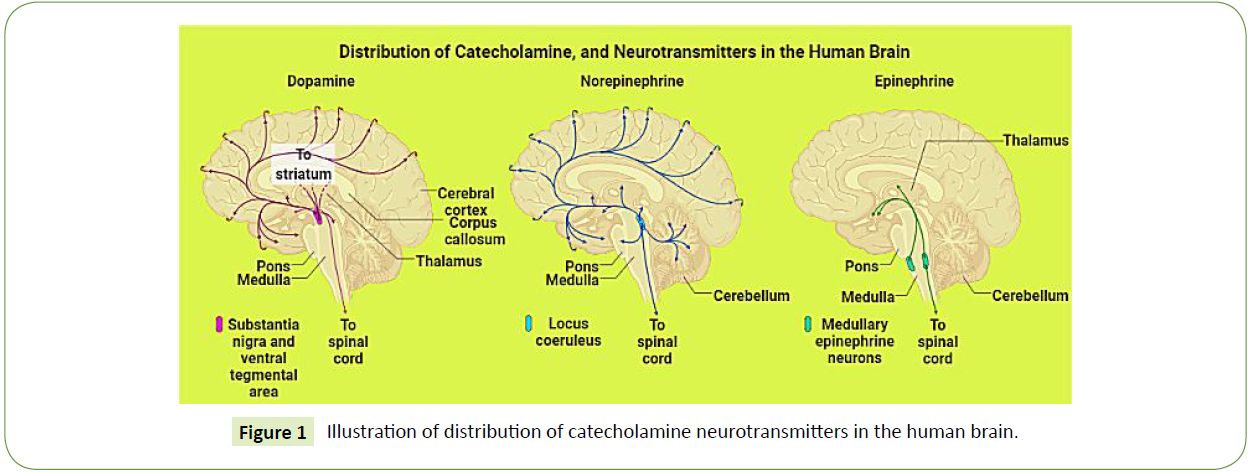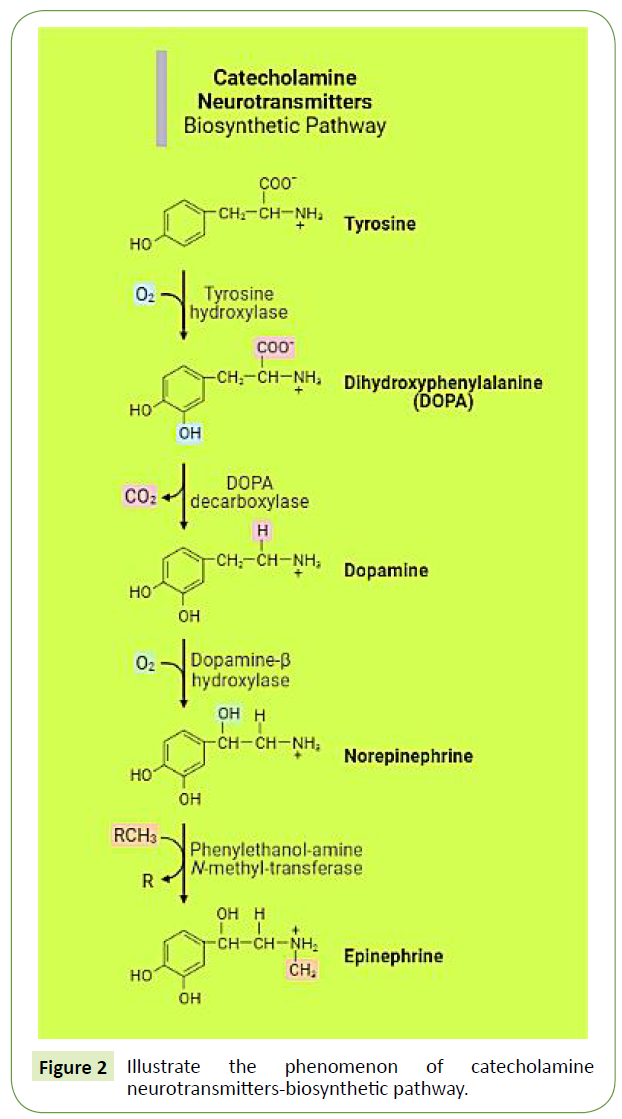Traumatic Brain Injury: Mechanistic Insight on Pathophysiological Mechanisms Underlying, Neurotransmitters, and Potential Therapeutic Targets
Rajiv Kumar*
Rajiv Kumar*
National Institute of Medical Science, India
- *Corresponding Author:
- Rajiv Kumar
National Institute of Medical Science, India
E-mail: chemistry_rajiv@hotmail.com
Received Date: July 28, 2021; Accepted Date: August 12, 2021; Published Date: August 19, 2021
Citation: Kumar R (2021) Traumatic Brain Injury: Mechanistic Insight on Pathophysiological Mechanisms Underlying, Neurotransmitters, and Potential Therapeutic Targets. Med Clin Rev Vol.7 No.8:149.
Abstract
More than seven million Americans have suffered a stroke, and at an economic burden of billions annually. Among these cases, ischemic stroke is the only leading cause that accounts for more than 80% of cases of stroke patients. Almost 100% of patients who are being affected by severe and moderate head injury will not regain the pre-morbid level of ability and will be permanently disabled. Therefore, TBI is one of the leading causes of morbidity and mortality globally, particularly among young people.
Keywords
Traumatic Brain Injury; Neurotransmitters; Potential Therapeutic Targets
Introduction
Following the World Health Organization (WHO), nearly five million people lost their lives per year from traumatic injuries worldwide [1]. Moreover, brain ischemia is also underlined as a key cause of death and adult brain disability. Enormous progress has been made in drug discovery, even though a lot of uncertainty persisted in the methodology adopted in treating traumatic brain injury (TBI) and diseases [2]. In severe conditions, these injuries are untreatable and considered fatal diseases. The understanding of the pathophysiology of brain injury and infection is an important aspect. These interpretations are very useful in the development of effective treatment and assist in research on novel targets of future interventions. The mechanisms of the physiology of TBI are a series of complex phenomena with great uncertainty involving alterations in cerebral perfusion, triggering of inflammatory cytokines, and excitotoxicity [3]. In some head injuries i. e., concussions, contusions, brain hemorrhages, intracranial hematomas, coup-countercoup brain injury, diffuse axonal injury, penetrating brain injury, the second impact syndrome, and infection may occur at any time and later on, transpired into a deadly one. In other cases, too, an injury or wound infection becomes apparent, if it is not quickly and successfully treated, such states defined as cellulitis, and initiates the spread of speedy infection [4]. As the infection inflates, it may blow out through the blood in the patient body, at these moments, the patient fell unwell, simultaneously, temperature elevates and the infections achieve a fatal phase and later on, transpired into severe infection ailment, known as sepsis. The streptococcus pyogenes, staphylococcus aureus/ mrsa, pseudomonas aeruginosa, and enterococcus are those bacteria and micro-organisms, which may cause such infections in the aforementioned injuries [5]. Among these cases, ischemic stroke is the only leading cause that accounts for more than 80% of cases of stroke patients.
The author’s goal is to illustrate the underlying neurochemical, synaptic transmission, chemical pathways, and metabolic responses and the complications that occurred during TBI. To prepare a blueprint for the treatment that can be applied for dealing with these complex situations, the elaboration of the offers is required and the same can be underlined for searching for potential targets for innovating therapy for the future [6]. That is why further interpretation and scientific elucidation are necessary to discover the recognition of features involved in it. These strategies can emerge as a small tool for the discovery of potential therapeutic targets for early intervention [6]. Currently, no effective and accurate remedy is available, and therefore, an advanced approach and a better understanding of the pathophysiology of TBI are required, which can open new avenues for the discovery and development of novel therapeutic options. The authors believe that these findings will be succeeded to decrease the rate of mortality. TBI is classified into two categories I.e., primary and secondary. The causes of the initiation of these diseases have directly linked to the instantaneous impact of altered mechanical insults to the brain (Figure 1).
The initiation of secondary insults, including hypotension, hypoxia, and reduced cerebral perfusion pressure, may exacerbate inflammation and swelling, and compromise cerebral perfusion [7]. Generally, the symptoms of both types of injuries co-exist at a time in a patient. The lacerations, compression, and concussion forces are the main root that is answerable to focal brain damage, and skull fracture. Neuronal and glial [8] associated with the coup and compromised blood supply through the necrotic area initiate intracerebral hemorrhages, hematoma, epidural, and subdural at confined layers of the brain [9]. Further, a solid impact of the injury induces cognitive insufficiency, behavioral fluctuations, and hemiparesis. These tensile forces damage blood vasculature, neuronal axons, and oligodendrocytes leading to brain edema and ischemic brain damage. These consequences promote irregularities in axonal transport and abolish axonal cytoskeleton. Neurotransmitters communicate messages from one neuron to another neuron via the brain's circuits and transform the way through which the response is generated.
Catecholamine, a monoamine neurotransmitter, contains catechol and a side-chain amine. This compound supports the body in dealing with stress or fright and initiates "fight-or-flight" reactions. The adrenal glands synthesize catecholamine [3]. The catecholamine’s are categorized as epinephrine (adrenaline), dopamine, and norepinephrine (noradrenaline). Neurotransmitters’ interactions control the aspect of the response, it can be raised (potentiate) or lower (depress), and all the process depends on the way neurons answer back when neurotransmitters assist the receptors (Figure 2). The release of a low baseline level of neurotransmitters is due to a lack of stimulation [10]. But, according to the need of the threshold action potentials, it can be increased. The event of excitation or inhibition is the outcome of the binding of neurotransmitters and occurs at the time of its association with the postsynaptic neuron [11]. These events concern when the release and receptor bind it. Neurotransmitters sometimes perform neuromodulator action and can act on large numbers of neurons immediately. The neurotransmitters can be gathered on a larger scale to regulate groups of neurons. It is a slower process of comparatively excitatory and inhibitory transmission [12]. Various happenings were considered among the main causes for delaying secondary pathology of hemorrhage and brain edema. The interpretation of traumatic brain injury is a much-needed aspect of current medical science, and a mechanistic insight on pathophysiological mechanisms underlying will open new avenues for further research. Besides it, the interpretation and chemistry of neurotransmitters will be more approachable and can easily be applied for searching for new potential therapeutic targets.
Acknowledgments
Author (Rajiv Kumar) gratefully acknowledges his younger brother Bitto for motivation. The author acknowledges bio render for providing the facility to illustrate the diagrams (Figure 1 and 2) and again acknowledges the same.
Availability of data and materials
Wherever necessary, relevant citations are included in the reference section.
Competing interests
The author has declared that no competing interest exists.
References
- Johnson WD, Griswold DP (2017) Traumatic brain injury: a global challenge. Lancet Neurol 16(12): 949-950.
- Ratliff WA, Saykally JN, Mervis R, Lin X, Cao C, et al. (2019) Behavior, protein, and dendritic changes after model traumatic brain injury and treatment with nanocoffee particles. BMC Neurosci 20(1): 44.
- Kumar R, Chhikara BS, Gulia K, Chhillar M (2021) Review of nanotheranostics for molecular mechanisms underlying psychiatric disorders and commensurate nanotherapeutics for neuropsychiatry: The mind knockout. Nanotheranostics 5(3): 288-308.
- Said A, Naeem N, Siraj S (2020) Mechanisms underlying the wound healing and tissue regeneration properties of Chenopodium album. 3 Biotech (10): 452.
- Bitner BR, Marcano DC, Berlin JM (2012) Antioxidant carbon particles improve cerebrovascular dysfunction following traumatic brain injury. ACS Nano 6(9).
- Bony BA, Kievit FM (2019) A role for nanoparticles in treating traumatic brain injury. Pharmaceutics 11(9): 473.
- Kany S, Vollrath JT, Relja B (2019) Cytokines in inflammatory disease. Int J Mol Sci 20(23): 6008.
- Kumar R, Chhikara BS, Gulia K, Chhillar M (2021) Cleaning the molecular machinery of cellsviaproteostasis, proteolysis and endocytosis selectively, effectively, and precisely: intracellular self-defense and cellular perturbations. Mol Omi 17(1): 11-28.
- Lippi G, Favaloro EJ, Franchini M, Guidi GC (2009) Milestones and perspectives in coagulation and hemostasis. Semin Thromb Hemost 35(1): 9-22.
- Si B, Song E (2018) Recent advances in the detection of neurotransmitters. Chemosensors 6(1):1-24.
- Kerage D, Sloan EK, Mattarollo SR, McCombe PA (2019) Interaction of neurotransmitters and neurochemicals with lymphocytes. J Neuroimmunol 332: 99-111.
- Hammond-Weinberger DR, Wang Y, Glavis-Bloom A, Spitzer NC (2020) Mechanism for neurotransmitter-receptor matching. Proc Natl Acad Sci USA 117(8): 4368-4374.

Open Access Journals
- Aquaculture & Veterinary Science
- Chemistry & Chemical Sciences
- Clinical Sciences
- Engineering
- General Science
- Genetics & Molecular Biology
- Health Care & Nursing
- Immunology & Microbiology
- Materials Science
- Mathematics & Physics
- Medical Sciences
- Neurology & Psychiatry
- Oncology & Cancer Science
- Pharmaceutical Sciences


